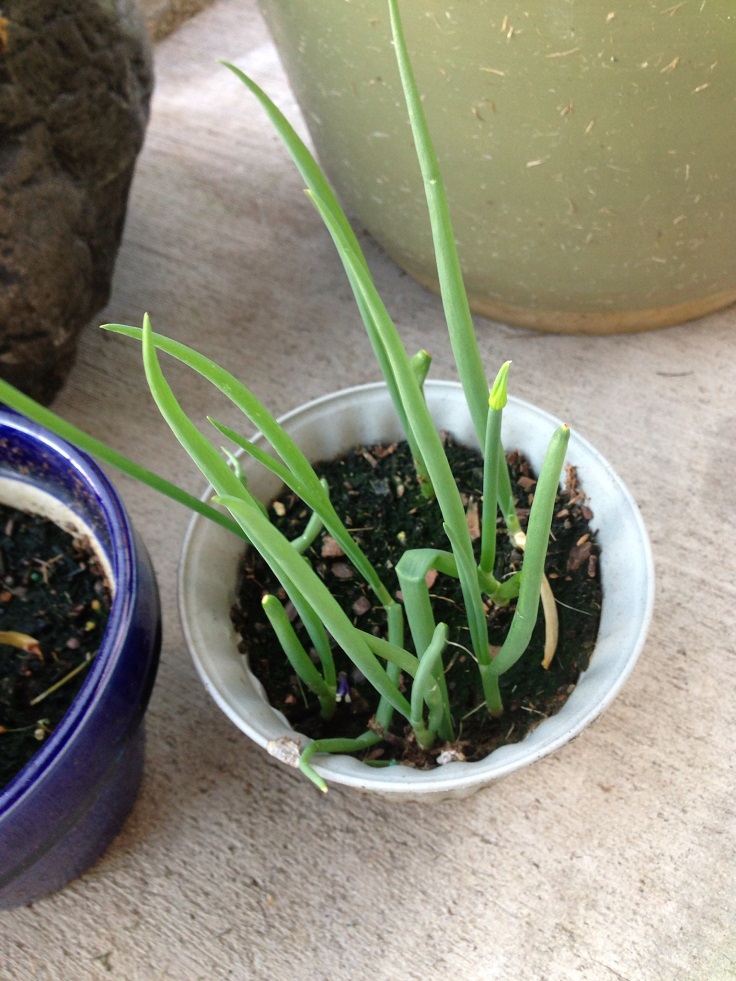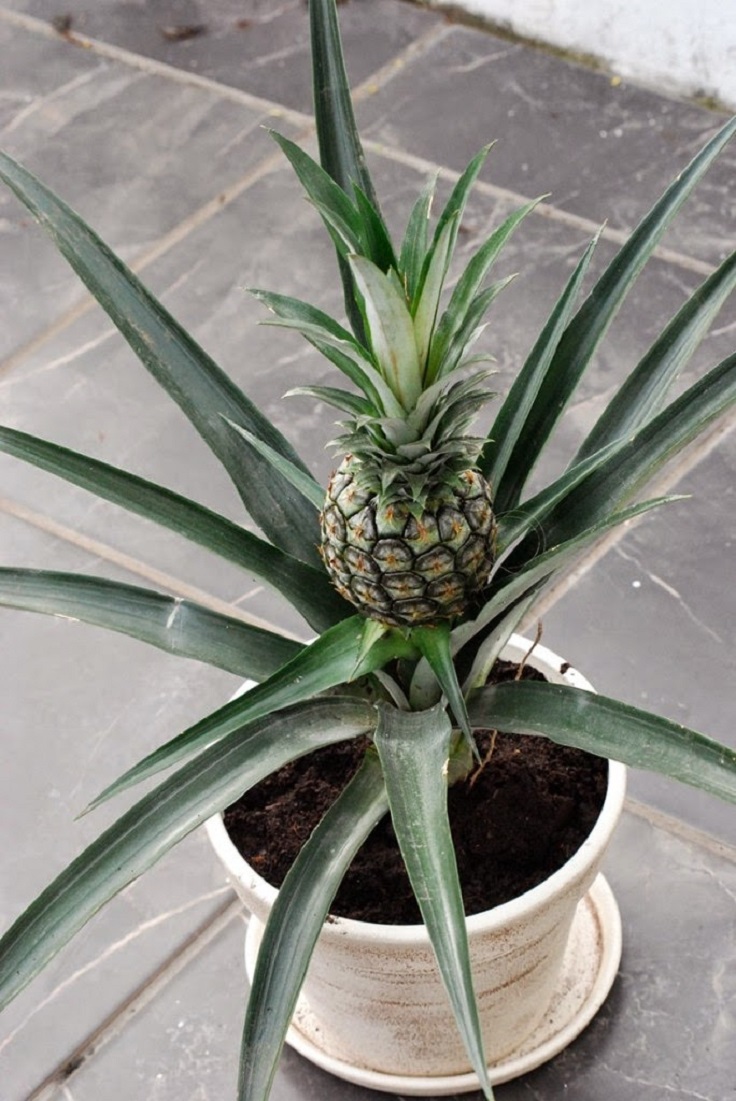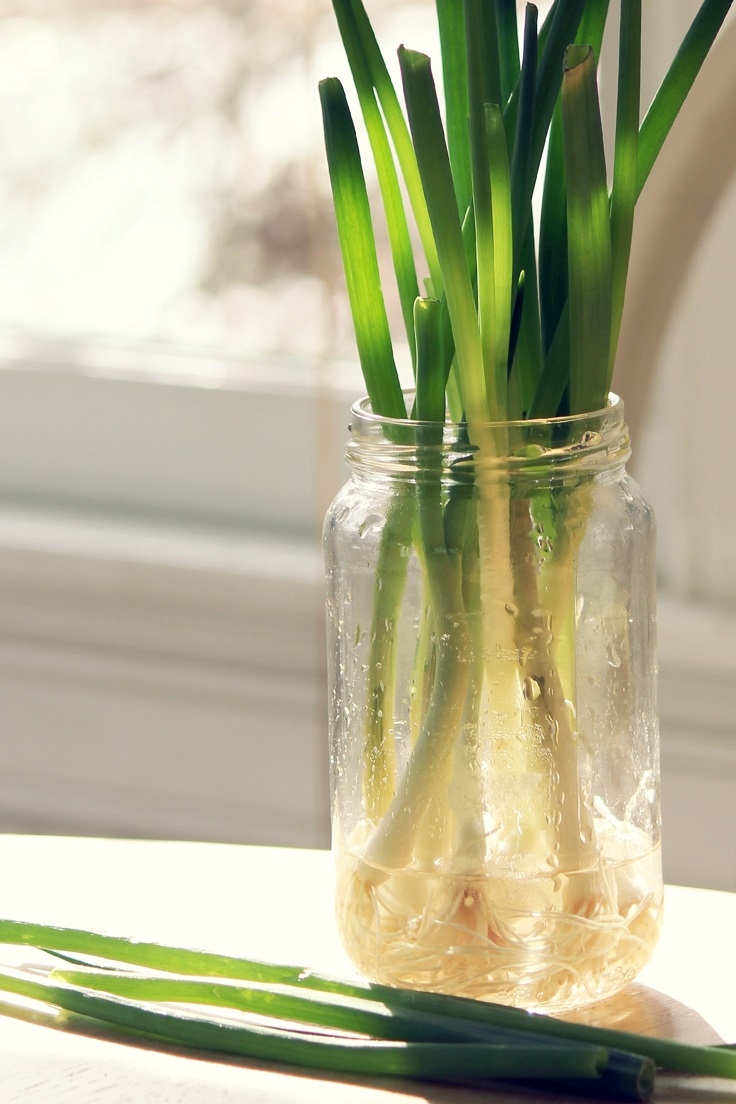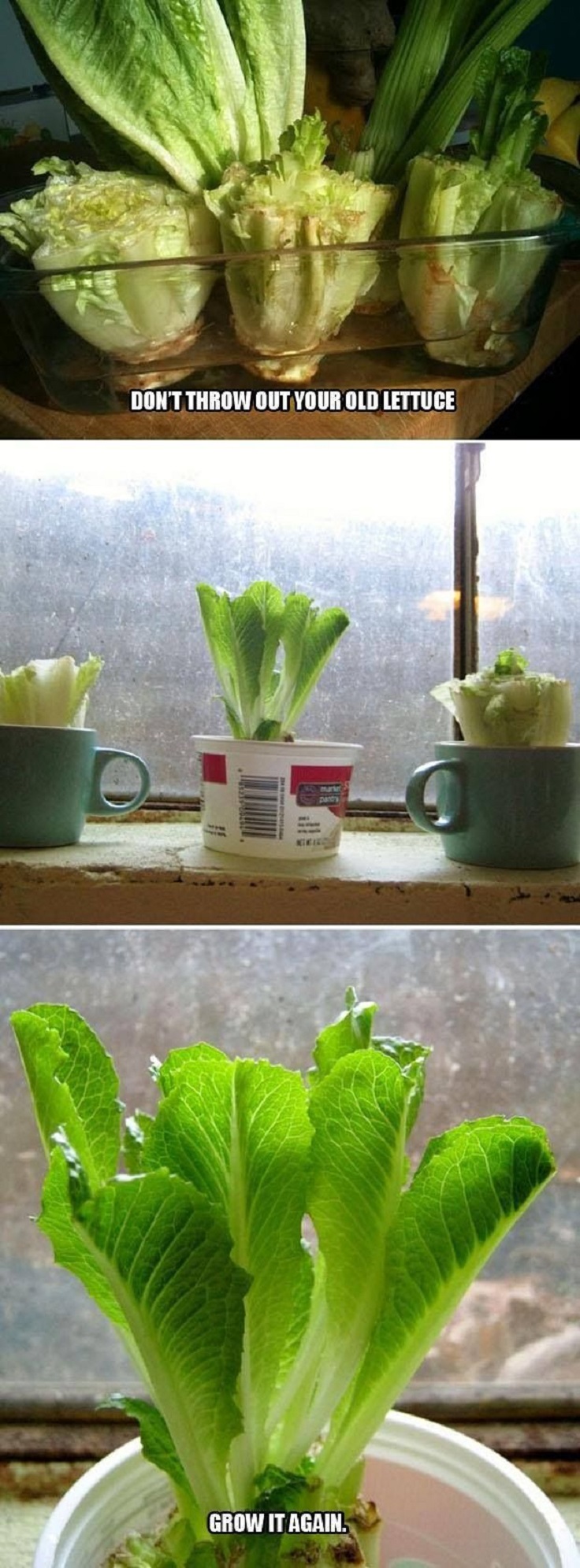Organic food is expensive. That is a fact. But this fact shouldn’t stop us from trying hard not to ingest pesticides.
This is why growing your own food is the best way to control the quality of what you eat. You have probably tried to grow something from seed and know how difficult and time consuming it can be. Fortunately, there is another way which is not only cheap but also simple and easy. We are talking about regrowing food from kitchen scraps.
It sounds too good to be true, but you can easily upcycle everything from lemongrass, onion buts to celery scraps with a great chance of success. So don’t throw away those scraps but learn how to regrow them. We do recommend using organic foods to start with.
Celery

via popsugar.com
Celery is probably the best food to start your regrowing adventure. It is so easy to grow new celery from kitchen scraps. Just take the celery bunch base and put in a bit of warm water you have previously placed in a bowl. Place your bowl in a sunny spot and wait for the leaves to start at the base. This should happen in a week or so. Now plant your celery in soil and wait for full growth.
Ginger

photo via thehealthyhavenblog.com
We all know the health benefits of consuming ginger, but we also know how expensive ginger roots are. But there is an easy way to grow this superfood in your own home – from kitchen scraps! Choose a ginger root with as many fingers as possible, soak it in warm water for one night then cut it into chunks. Prepare some well-drained soil and place one ginger chink on top of it, covering it with just a little soil. Keep it in a warm place and water it regularly.
Sweet Potatoes

Just like regular potatoes, sweet potatoes can be easily regrown from scraps. Take one half of sweet potato and suspend it (using toothpicks) over a bowl with water. Make sure the water covers half of the potato. Place the bowl on a light spot and after just a few days you will see roots showing up. When they reach about 4 inches, break them off and put them in water. When the new roots grow an additional inch, they are ready to be planted in soil.
Garlic

via cindyparrett.com
You need only one clove to regrow whole new garlic. Plant it with the roots pointing down in previously prepared potting soil and place it in a location that has plenty of light. The clove will root itself. Once you see the shoots, cut them back. This will force the plant to put all its energy into producing a new bulb. Of course, you can then use a clove from your new bulb to regrow another one.
Pineapples

You thought that pineapples could grow only in a tropical climate? Well, you can actually regrow a pineapple from its leaves in the commodity of your own home! Just cut off the leafy part making sure you don’t cut any part of the actual fruit, and suspend it over a bowl filled with water. Please place it in a sunny location, making and keep the room warm. Change the water daily, and soon you will notice the roots taking place. Replant in soil and wait for your own pineapple to grow. The plant looks gorgeous and can also be used as a house plant.
Mushrooms

via food-hacks.wonderhowto.com
Ok, mushrooms are a little bit more difficult to regrow, but it’s worth the effort. The thing is, they need a warm place with lots of humidity as well as very rich soil. We recommend planting them in a pot instead of in the ground to control the temperature and humidity. You will need to plant only the stem of the mushroom, so cut the head and plant the stem in soil that is rich in nutrients. Make sure only the top of the stem is seen on top. If the cuttings take, new mushrooms will grow pretty quickly.
Green Onions

via ashleyshomemadeadventures.wordpress.com
Green onions are so easy to regrow. All you need is the leftover roots from a green onion. Take a bowl, place them with roots down and cover with water. Change the water once in a few days. You will have your new green onions in about a week. Now you can always have green onions on hand.
Pumpkins

via bonnieplants.com
You might be using pumpkin seeds as a healthy snack, but did you know you can regrow a pumpkin from its seeds? Take a couple of seeds and simply plant them in the ground. Just make sure you choose a sunny location. New plants will regrow. You can even plant a whole pumpkin, and a new one will grow. For instance, you can fill your Jack-O-Lantern with soil after Halloween and plant the whole thing.
Peppers

via picketfencegreenhouse.dianemumm.com
Peppers are great to grow by beginners. Just like pumpkins, all you need to do is plant some seeds in potting soil on a sunny location. Just make sure it is not too scorching. You will be amazed at how quickly they’ll grow. You can plant them in a container then replant them in the ground if you wish. As they grow perfectly in pots, they are great for balconies and small-spaced gardens.
Romaine Lettuce

via paleo.com.au
Lettuce is yet another veggie you can easily regrow from scraps. It is one of the most commonly used vegetables in every home all year round, so this is always a good way to have it on hand. The method is simple – all you need to do is take the bottom of the heart and place it in a jar with about a half-inch of water. Place the jar on a sunny spot and change the water every couple of days. You will see leaves sprouting in just a few days. Now let it grow until it has enough green leaves for a tasty salad.




SO I hv abt 5 plants of Romaine growing. After leaves come out can I plant in my raised garden bed & harvest from there or should I just lv whr they are? I hv them on my windowsill & don’t think wl hv much room for them.
HI Luz.
It sounds like you are doing a great job on getting them started. Personally, I’d leave them there and harvest every day or so. That should encourage more growth. If not, there’s always LED lightbulbs which have gone down drastically in price but your plants will prefer it to natural daylight. Crazy but true because of the amount of lumens the LEDs provide. They still like those old twisty CFLs, too.
Organic =/= pesticide free. Organic in the US is a marketing term.
If you want completely pesticide-free produce you have to grow it yourself.
I want grow sweet pototoe plant , how would I do that cut the tios off, put them in dirt ,heR different answers, they r beautifull to grow !!
How can I control the white flys on the green pepper ?
Thank you
You forgot to add that, for convenience’s sake, gardeners want to use seeds from open pollinated/heirloom vegetable varieties, or they probably won’t grow true to type. The seeds from hybrids could make for an interesting plant breeding experiment, though.
Hey I grew a pineapple but bought the plant with a little pineapple already growing. It grew into a mature just a bit smaller than a softball. When it turned yellow it was ready to eat. Took all summer. It was the most sweet and delicious pineapple I’ve ever eaten. I kept the top and just stuck it in some fresh potting soil after cutting away all the fruit around the bottom and it is growing roots. I hope to have at least two next year. If Walmart offers them again I’ll grab a few more. So wonderful!
I have 13 pineapple plants that I have start my self. Two of them have pineapple plants starting from the bottom of the plant.it takes 18 to 24 months to get a pineapple from a plant. In the pass I had 1 pineapple that gave a fruit and about 2 years later she gave twin pineapples. Very tasteful and the size of a soft ball.
I’d love to try growing a pineapple but live in RI. Have limited southern exposure windows. How would they do in a green house during the winter. Would I need to bring them in for the winter months?